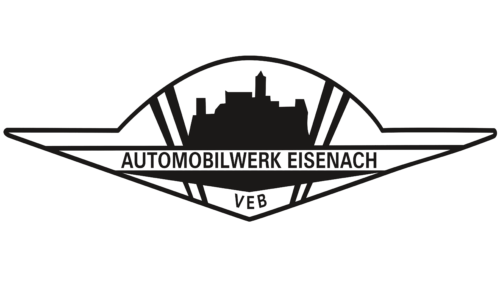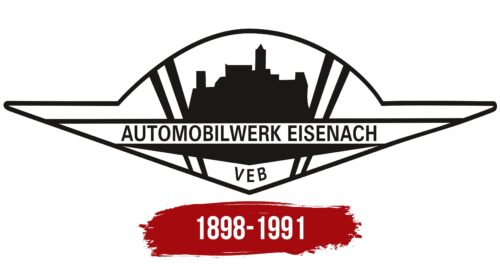The Wartburg logo embodied heavy industry, making it bulky, massive, and black. Its primary purpose was informational rather than marketing, visually representing the factory where German cars with simple technical features were produced.
Wartburg: Brand overview
Established in 1898 as Automobilwerk Eisenach, Wartburg began its journey in Eisenach, Germany. However, post-World War II, the reins of the Eisenach facility shifted into Soviet hands. It was in 1956 that the production of automobiles under the Wartburg name commenced.
The curtain-raiser for Wartburg’s vehicular lineup was the model 353, which debuted in 1956. Despite its lack of power, this modest, front-engine, two-stroke vehicle was admired for its resilience and straightforward mechanics. Remarkably, the 353 continued its production journey for three decades.
The ensuing years of the 1960s and 70s witnessed the birth of fresh Wartburg offerings, including the Wartburg Knight and the Wartburg 1.3. These cars showcased modern designs and improved engine capabilities. However, regarding technological progression, Wartburg lagged, especially compared to Western car manufacturers. Their vehicles missed crucial safety amenities and emission checks.
Towards the end of the 1980s, while Wartburg cars may have been technologically dated, they stood as poignant reminders of East Germany’s structured economic setup. But winds changed post the 1990 German reunification, with the allure for Wartburg vehicles waning. By 1991, after manufacturing over 1.2 million vehicles, Wartburg halted its production. Unable to keep pace in a liberated market after the Eastern Bloc’s fall, the company ultimately concluded its operations that year.
Meaning and History
What is Wartburg?
This East German automaker created a variety of small and inexpensive cars for the domestic market. The brand was known for producing reliable and simple models that prioritized practicality over imagination. The 353 was the company’s most famous model, a compact family car produced for many years. The brand maintained a loyal customer base in East Germany until the fall of the Berlin Wall, and subsequent German reunification led to its eventual extinction.
1898 – 1991
It is important to note that the Wartburg emblem was highly exaggerated and resembled a dark science and technology book illustration. It also looked like a flying saucer with characteristic side protrusions and a convex center. This unusual shape did not hinder the logo from representing the company effectively. On the contrary, the atypical appearance of the brand mark attracted consumer attention, even though it adorned cars with outdated features.
Externally, the German manufacturer’s emblem resembled an alien spaceship and a downward-pointing arrow. It featured the arches of Wartburg Castle, after which the factory was named, engraved like a woodcut. Two diagonal stripes ran on the right and left, widening at the top and narrowing at the bottom.
The logo contained a significant amount of text. A horizontal band occupied the main area with the German inscription “Automobilwerk Eisenach,” indicating the type of enterprise and its location. The font was a classic print style without serifs, demonstrating the products’ accessibility to all interested parties. Below this was the abbreviation “VEB,” set in a similar typeface—uppercase, bold, and tall.
The side stripes resembled speed lines used in logos to convey dynamism effectively. The difference was that, in this case, they were arranged vertically, which still added a sense of movement and imbued the emblem with hidden energy.





